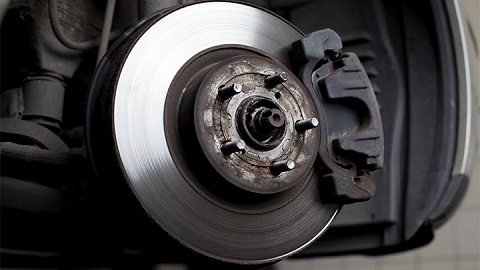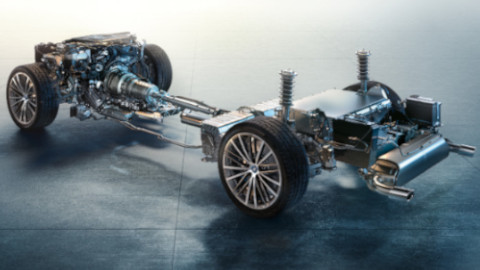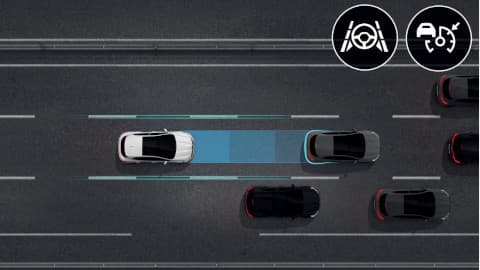What is Regenerative Braking and How Does It Work?
15th Aug 2025
Regenerative braking is a key technology in electric and hybrid vehicles that captures energy when slowing down, turning it into electricity instead of heat. This not only improves the car’s efficiency but also reduces brake pads wear and tear.
In this article, we’ll explore how regenerative braking works, its benefits and some limitations you should know about.
- What is regenerative braking?
- How regenerative braking works
- What does regenerative braking feel like?
- Limitations and challenges
- Frequently Asked Questions
What is regenerative braking?
Regenerative braking, also known as regen, is a form of technology designed to capture and repurpose the kinetic energy generated when a car slows down or brakes. Primarily used in electric vehicles (EV), the regenerative braking system improves energy efficiency, extends driving range, and reduces wear and tear on brake pads.
Some models of plug-in hybrid (PHEV) and hybrid cars also feature this technology, although it operates slightly differently than in EVs.
How regenerative braking works
To understand how regen works, it’s important to first understand how traditional braking systems work. When a combustion engine vehicle is in motion, it produces kinetic energy. In a conventional braking system, this energy is converted into heat through friction in the brakes and is completely wasted.
Regenerative braking, on the other hand, doesn’t rely solely on traditional friction brakes. instead, the electric motor acts as a generator, using the kinetic energy to turn the motor in reverse. This process generates electricity, which is then used to recharge the vehicle’s battery.
The stored energy can later be used to power systems such as air conditioning, lights or even the motor itself. This reduces the reliance on traditional braking and reduces brake wear over time.
What does regenerative braking feel like?
The main difference when driving a vehicle with regen is that the car begins to snow down immediately after you lift your foot off the accelerator. You don’t need to press the brake pedal for the vehicle to start losing speed.
How quickly your car slows down depends on the regen setting, the stronger the setting, the more aggressive and immediate the deceleration. This can often be adjusted using B-Mode, a driving mode available in many hybrid and electric vehicles.
Some EV models offer a one-pedal driving experience, with Tesla vehicles being among the most well-known for supporting this feature. At full regen, a car can come to a complete stop without needing to press the brake pedal. Simply lifting your foot off the accelerator is enough to initiate deceleration.
Contrary to what some may think, one-pedal driving is easy to get used to. After a short adjustment period, it often feels intuitive and smooth.
Limitations and challenges
Even though regenerative brake is an excellent system, it can’t completely replace traditional friction braking. EVs and hybrids must include both braking systems, as regenerative braking slows the vehicle down, but can’t stop it quickly enough in emergency situations.
When your electric vehicle’s battery is full, the energy recovered through regenerative braking can’t be stored. In this situation, the system switches back to friction braking, which is more effective.
Another limitation occurs during cold weather. At low temperatures, battery charging is restricted to protect the battery, so regenerative braking may feel weak or even disabled until the car has warmed up.
Regen is also less efficient at slow speeds because braking at slower speeds generates less kinetic energy, meaning there’s less energy available to recover.
Frequently Asked Questions
No, on the contrary. By reducing the usage of the traditional friction brake, regenerative braking reduces the wear and tear on brake pads.
It is generally believed that driving with regenerative braking is better for efficiency and the environment. This is because the regen can restore energy into an electric vehicle’s battery, such energy that would’ve been wasted in form of heat by friction braking.
Using regenerative braking on a motorway can be less efficient than in stop-and-go traffic. While it’s not forbidden to use it on a motorway, you should maintain a consistent speed and minimal braking.
No. Even though some vehicles allow you to control the intensity of the regenerative braking through the B-Mode, it’s usually not possible to switch it off completely.
Learn more about cars with Evans Halshaw
Regenerative braking is a smart technology that helps electric and hybrid vehicles use energy more efficiently by capturing power usually lost during braking. While it can’t completely replace traditional brakes, regen plays a big role in extending driving range and reducing wear on brake components.
If you’d like to learn more about electric cars and read more driving guides, you can access Evans Halshaw Blog, where you’ll find update guidance and tips to improve your knowledge.









